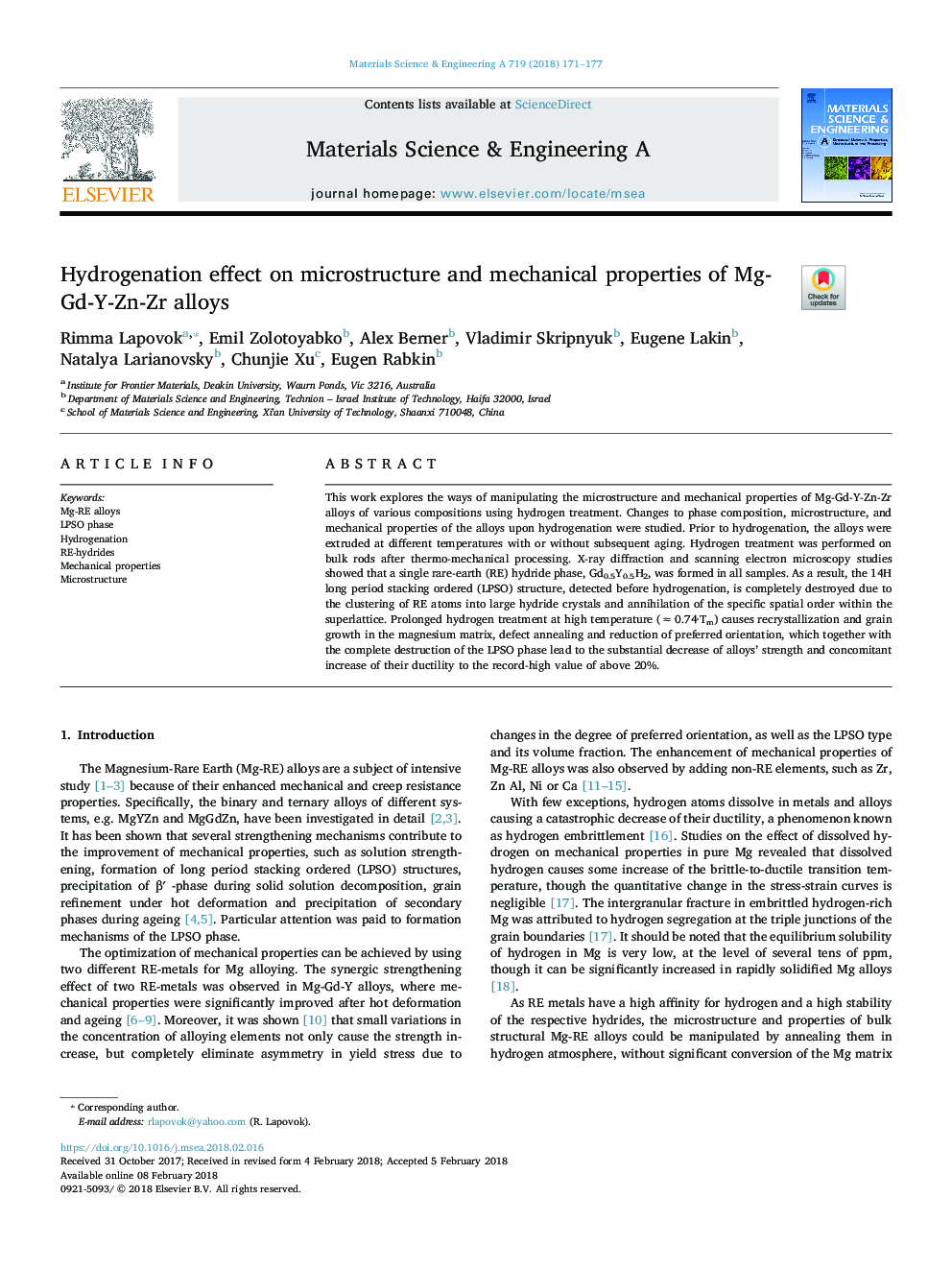| Article ID | Journal | Published Year | Pages | File Type |
|---|---|---|---|---|
| 7973140 | Materials Science and Engineering: A | 2018 | 7 Pages |
Abstract
This work explores the ways of manipulating the microstructure and mechanical properties of Mg-Gd-Y-Zn-Zr alloys of various compositions using hydrogen treatment. Changes to phase composition, microstructure, and mechanical properties of the alloys upon hydrogenation were studied. Prior to hydrogenation, the alloys were extruded at different temperatures with or without subsequent aging. Hydrogen treatment was performed on bulk rods after thermo-mechanical processing. X-ray diffraction and scanning electron microscopy studies showed that a single rare-earth (RE) hydride phase, Gd0.5Y0.5H2, was formed in all samples. As a result, the 14H long period stacking ordered (LPSO) structure, detected before hydrogenation, is completely destroyed due to the clustering of RE atoms into large hydride crystals and annihilation of the specific spatial order within the superlattice. Prolonged hydrogen treatment at high temperature (ââ¯0.74·Tm) causes recrystallization and grain growth in the magnesium matrix, defect annealing and reduction of preferred orientation, which together with the complete destruction of the LPSO phase lead to the substantial decrease of alloys' strength and concomitant increase of their ductility to the record-high value of above 20%.
Related Topics
Physical Sciences and Engineering
Materials Science
Materials Science (General)
Authors
Rimma Lapovok, Emil Zolotoyabko, Alex Berner, Vladimir Skripnyuk, Eugene Lakin, Natalya Larianovsky, Chunjie Xu, Eugen Rabkin,
